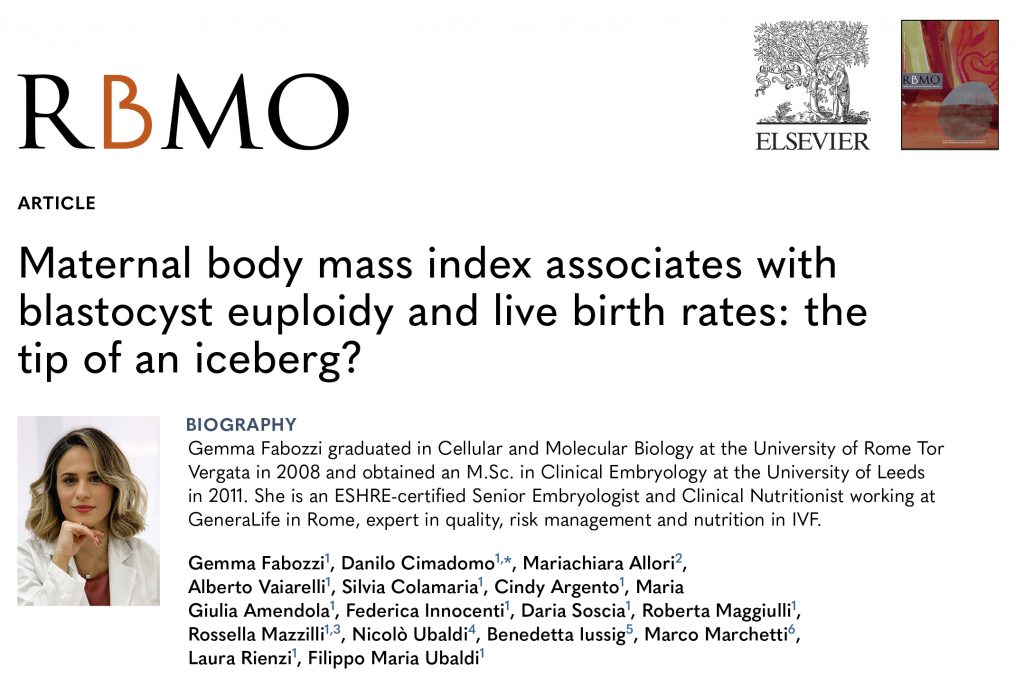
Gemma Fabozzi, Danilo Cimadomo, Mariachiara Allori, Alberto Vaiarelli, Silvia Colamaria, Cindy Argento, Maria Giulia Amendola, Federica Innocenti, Daria Soscia, Roberta Maggiulli, Rossella Mazzilli, Nicolò Ubaldi, Benedetta Iussig, Marco Marchetti, Laura Rienzi, Filippo Maria Ubaldi
RBMO Reproductive Biomedicine Published:July 22, 2021DOI:https://doi.org/10.1016/j.rbmo.2021.07.006
Abstract
Research question: Does maternal preconceptional body mass index (BMI) associate with mean blastocyst euploidy rate (m-ER) per patient and live birth rate (LBR) after vitrified–warmed euploid single embryo transfer (SET)?
Design: Observational study conducted between April 2013 and March 2020 at a private IVF clinic, involving 1811 Caucasian women undergoing trophectoderm biopsy and comprehensive chromosome testing. The outcomes of 1125 first vitrified–warmed euploid SET were also analysed. Patients were clustered as normal weight (BMI 18.5–25; n = 1392 performing 859 SET), underweight (BMI <18.5; n = 160 performing 112 SET) and overweight (BMI >25; n = 259 performing 154 SET). m-ER per patient was the primary outcome. The secondary outcomes were all clinical outcomes per euploid SET. All data were adjusted for confounders through regression analyses.
Results: The m-ER per patient decreases as maternal BMI increases from 17 up to 22–23 before reaching a plateau. A linear regression adjusted for maternal age confirmed this moderate association (unstandardized coefficient B: –0.6%, 95% confidence interval [CI]: –1.1 to –0.1%, P = 0.02). All clinical outcomes were similar between normal weight and underweight women. Overweight women, instead, showed higher miscarriage rate per clinical pregnancy (n = 20/75, 26.7% versus n = 67/461, 14.5%; odds ratio [OR] adjusted for blastocyst quality and day of full blastulation: 2.0, 95% CI: 1.1–3.6, P = 0.01) and lower LBR per SET (n = 55/154, 35.7% versus n = 388/859, 45.2%; OR adjusted for blastocyst quality and day of full blastulation: 0.67, 95% CI: 0.46–0.96, P = 0.03).
Conclusion: These data indicate a need for future research on more sensitive metrics to assess body fat mass and distribution, as well as on the mechanisms leading to lipotoxicity, thereby impairing embryo competence and/or endometrial receptivity. Overweight women should be informed of their higher risk for miscarriage and, whenever possible, encouraged to lose weight, especially before transfer.

